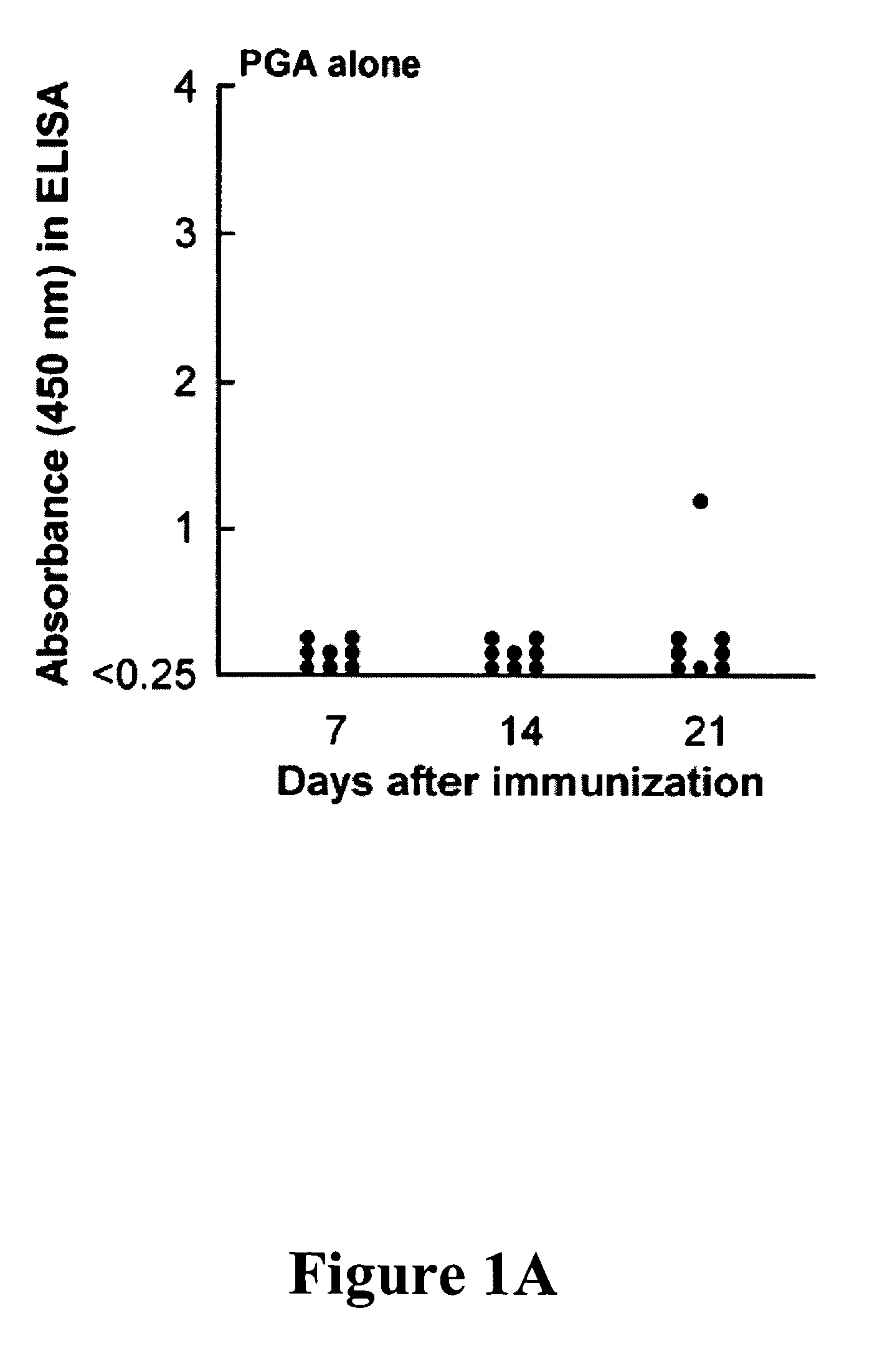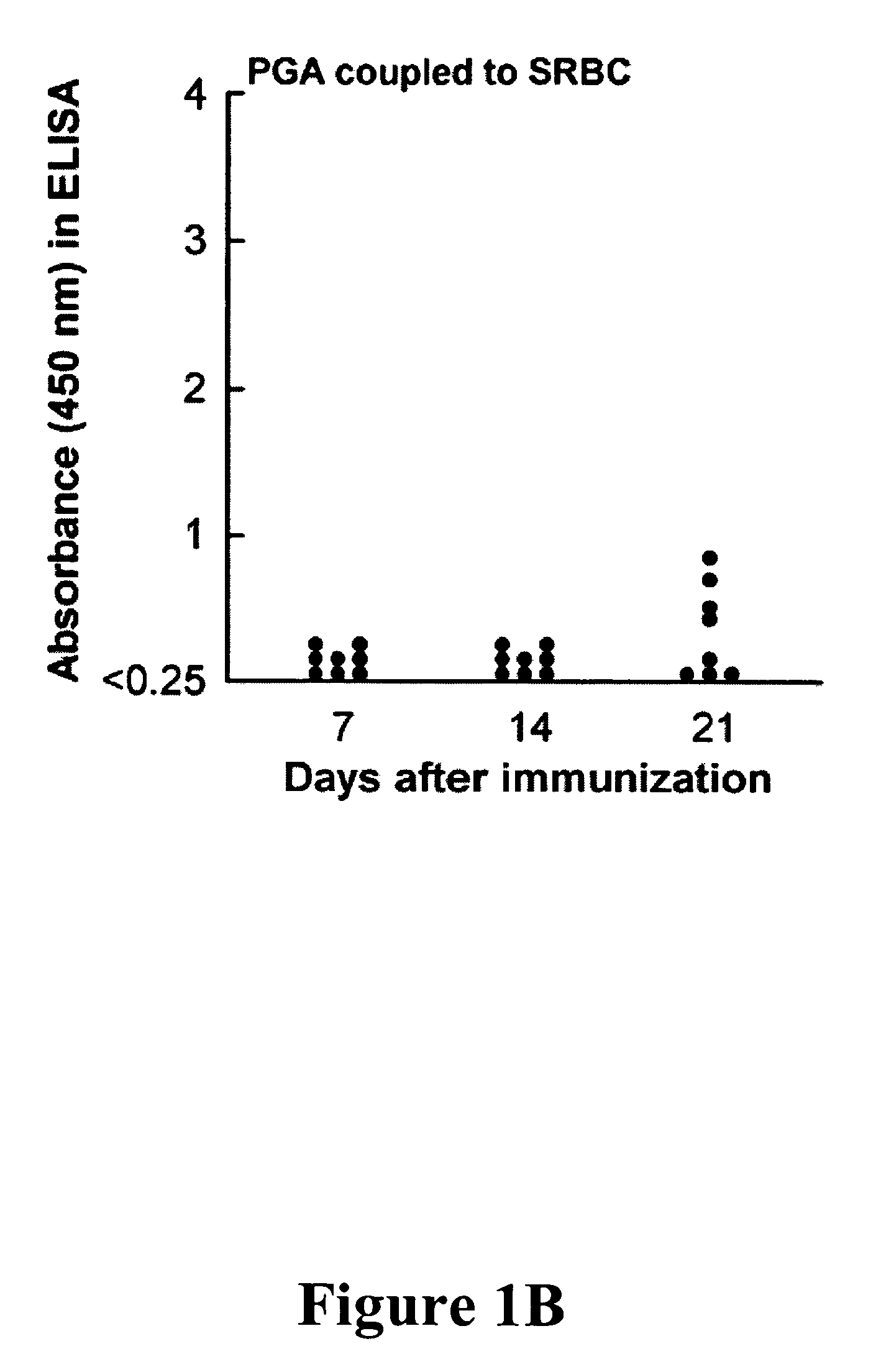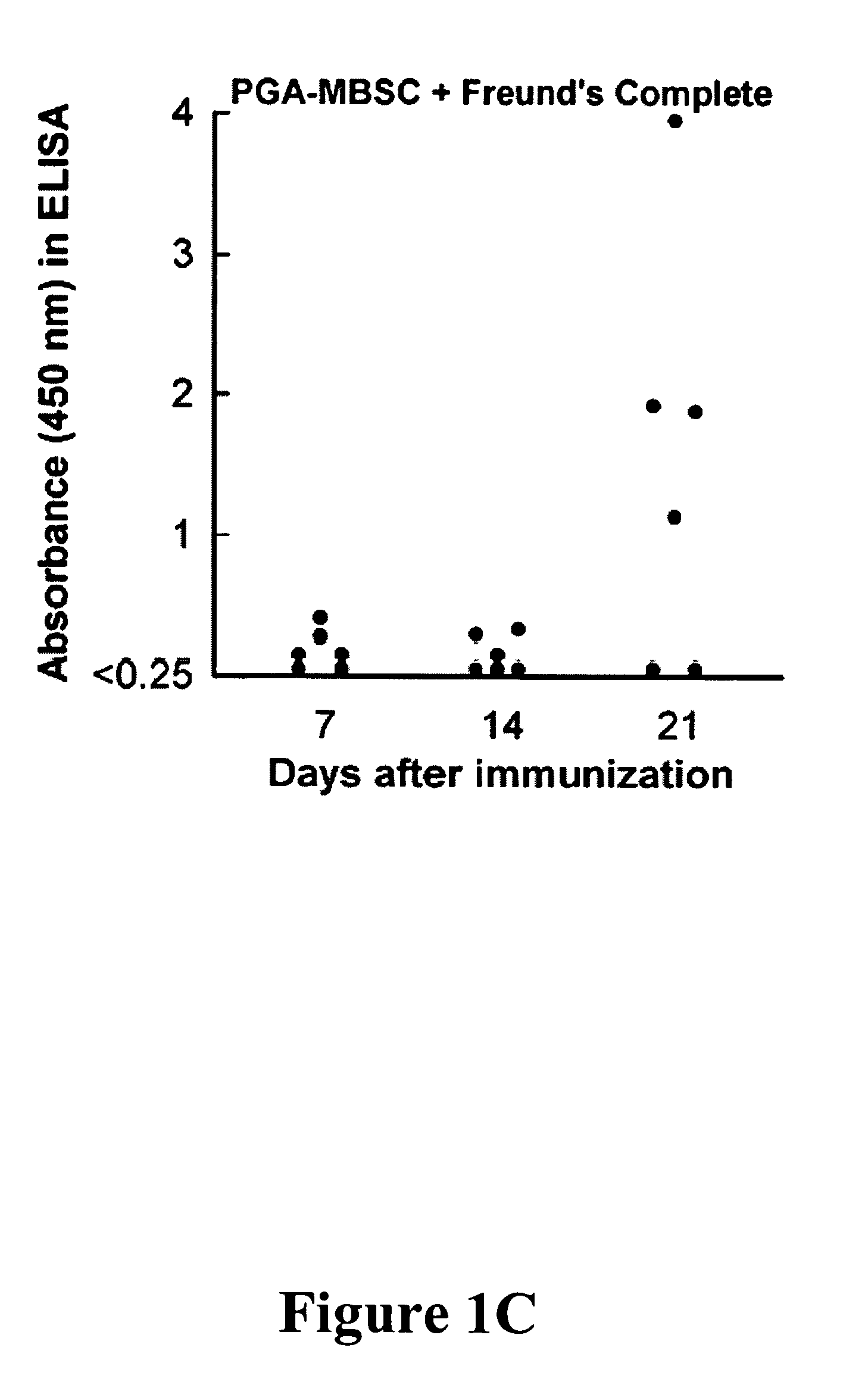Compositions and methods for detection, prevention, and treatment of anthrax and other infectious diseases
a technology of anthrax and compositions, applied in the field of compositions and immunization schemes for vaccines, can solve the problems of reducing the chance of survival, causing mass edema and organ failure, and treatment with antibiotics can do little to prevent fatal outcomes, and achieve effective protections and high molecular weight products
- Summary
- Abstract
- Description
- Claims
- Application Information
AI Technical Summary
Benefits of technology
Problems solved by technology
Method used
Image
Examples
example 1
Bacterial Strains, Bacterial Culture and Isolation of Poly γ-D-Glutamic Acid (γDPGA)
[0104]Bacillus licheniformis strain 9945 was obtained from the American Type Culture Collection. Bacillus anthracis Pasteur strain is maintained by the Nevada State Health Laboratory and was originally obtained from the Centers for Disease Control. Bacillus anthracis Ames strain was obtained from the US Army Medical Research Institute of Infectious Diseases, Frederick, Md.
[0105]Bacillus licheniformis was grown for 60 h on a gyratory shaker (250 rpm) at 37° C. on Medium E that contained 2 mM MnCl2.4H2O to stimulate increased production of γPGA in the D isomer. Sodium acetate crystals and glacial acetic acid were added to final concentrations of 10% and 1%, respectively. The bacterial cells were removed by centrifugation followed by filtration, and the PGA was precipitated from the medium with two volumes of ethanol. The precipitate was resolubilized in sodium acetate buffer (10% sodium acetate crystal...
example 2
Immunization of Mice to Produce Anti-γDPGA Antibodies
[0110]An initial experiment evaluated four immunization protocols. First, mice were immunized intraperitoneally (IP) with 2 μg γDPGA alone. Second, mice were immunized intravenously with sheep erythrocytes (SRBC) that had been coated with γDPGA by use of a chromium chloride procedure. This procedure had been successfully used for immunization of mice with the capsular polysaccharide of the pathogenic yeast Cryptococcus neoformans. Third, mice were immunized IP with a complex of γDPGA and methylated bovine serum (MBSA) in Freund's complete adjuvant. Finally, mice were immunized by intraperitoneal injection of 2 μg γDPGA in combination with a murine agonist CD40 mAb (FGK115) (500 μg).
[0111]The results (FIGS. 1A, 1B, 1C, and 1D) showed little or no response to immunization with γDPGA alone or γDPGA coupled to SRBC. The absence of an immune response to γDPGA coupled to SRBC suggests that the immune response to γDPGA is not predictable...
example 3
Optimization of CD40 mAb Treatment for Enhancement of the Immune Response to γDPGA
[0113]The antibody response produced by immunization with PGA in combination with CD40 agonist antibody demonstrated that the CD40 antibody was a potent adjuvant for generation of an immune response to γDPGA. In this example, a series of experiments was done to optimize the immunization protocol. In all instances, only anti-γDPGA IgG was measured. Other classes of antibodies can be similarly evaluated. The optimal antigen dose was first evaluated. Antibody levels were assessed 7 days after immunization. The results (FIG. 2) showed that immunization with 0.5 μg was optimal for mice. Reduced antibody levels were observed at higher and lower doses of γDPGA. There was little or no antibody response to immunization with 0.5 or 5 ng of γDPGA.
[0114]A second experiment evaluated the optimal dose of CD40 agonist antibody for immunization with 0.5 μg of γDPGA. The results (FIG. 3) showed that at least 400 μg of ...
PUM
| Property | Measurement | Unit |
|---|---|---|
| volume | aaaaa | aaaaa |
| volume | aaaaa | aaaaa |
| volume | aaaaa | aaaaa |
Abstract
Description
Claims
Application Information
 Login to View More
Login to View More - R&D
- Intellectual Property
- Life Sciences
- Materials
- Tech Scout
- Unparalleled Data Quality
- Higher Quality Content
- 60% Fewer Hallucinations
Browse by: Latest US Patents, China's latest patents, Technical Efficacy Thesaurus, Application Domain, Technology Topic, Popular Technical Reports.
© 2025 PatSnap. All rights reserved.Legal|Privacy policy|Modern Slavery Act Transparency Statement|Sitemap|About US| Contact US: help@patsnap.com



